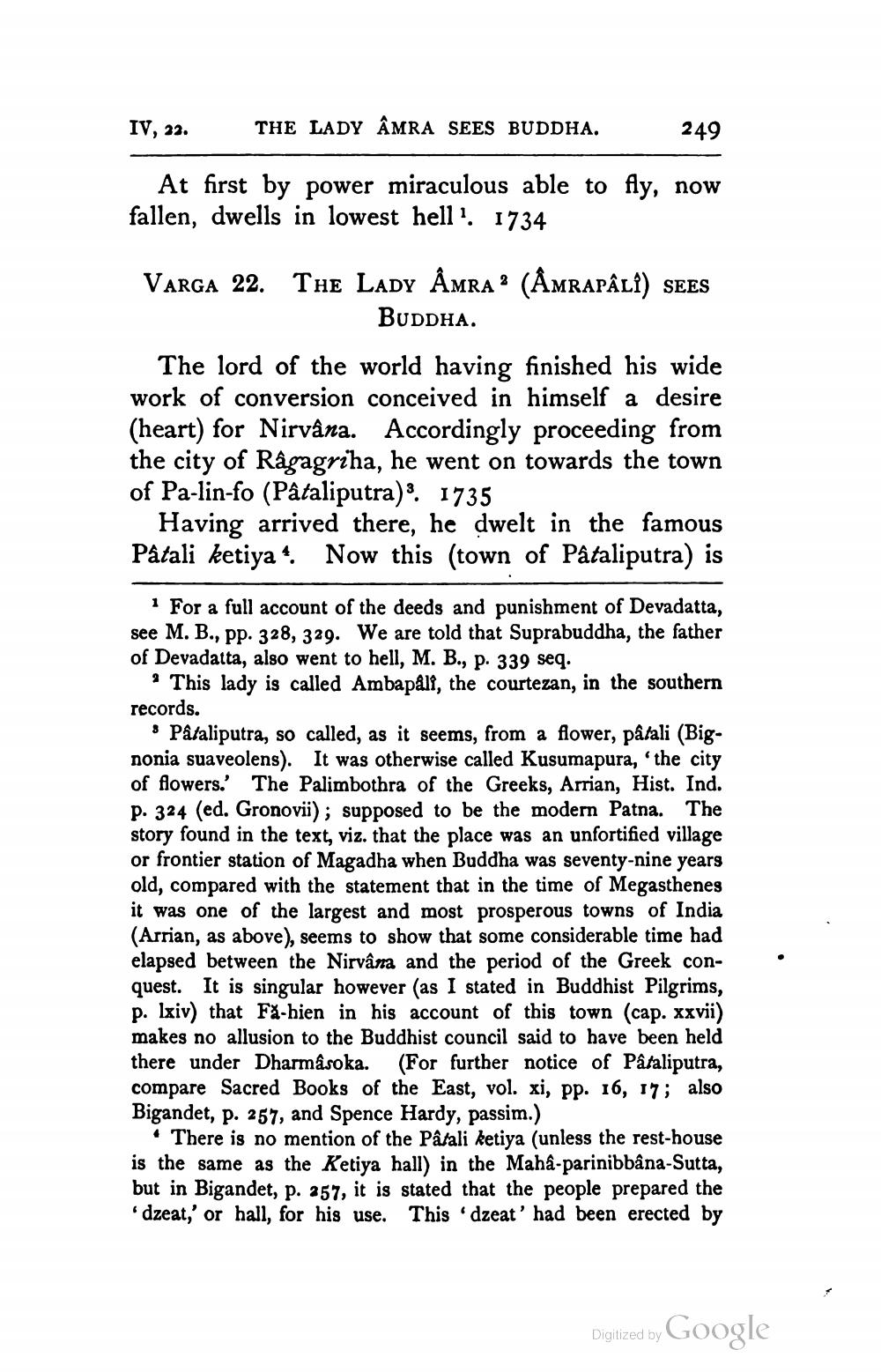________________
IV, 22.
THE LADY ÂMRA SEES BUDDHA.
249
At first by power miraculous able to fly, now fallen, dwells in lowest hell". 1734
Varga 22. THE LADY ÂMRA (ÅMRAPÂLI) SEES
BUDDHA. The lord of the world having finished his wide work of conversion conceived in himself a desire (heart) for Nirvana. Accordingly proceeding from the city of Râgagriha, he went on towards the town of Pa-lin-fo (Pâtaliputra) : 1735
Having arrived there, he dwelt in the famous Patali ketiya! Now this (town of Pâtaliputra) is
For a full account of the deeds and punishment of Devadatta, see M. B., pp. 328, 329. We are told that Suprabuddha, the father of Devadatta, also went to hell, M. B., p. 339 seq.
* This lady is called Ambapåll, the courtezan, in the southern records.
• Pâtaliputra, so called, as it seems, from a flower, påtali (Bignonia suaveolens). It was otherwise called Kusumapura, 'the city of flowers.' The Palimbothra of the Greeks, Arrian, Hist. Ind. p. 324 (ed. Gronovii); supposed to be the modern Patna. The story found in the text, viz. that the place was an unfortified village or frontier station of Magadha when Buddha was seventy-nine years old, compared with the statement that in the time of Megasthenes it was one of the largest and most prosperous towns of India (Arrian, as above), seems to show that some considerable time had elapsed between the Nirvana and the period of the Greek conquest. It is singular however (as I stated in Buddhist Pilgrims, p. lxiv) that Fă-bien in his account of this town (cap. xxvii) makes no allusion to the Buddhist council said to have been held there under Dharma soka. (For further notice of Pataliputra, compare Sacred Books of the East, vol. xi, pp. 16, 17; also Bigandet, p. 267, and Spence Hardy, passim.)
• There is no mention of the Pâtali ketiya (unless the rest-house is the same as the Ketiya hall) in the Maha-parinibbâna-Sutta, but in Bigandet, p. 257, it is stated that the people prepared the dzeat,' or hall, for his use. This dzeat' had been erected by
Digitized by Google




